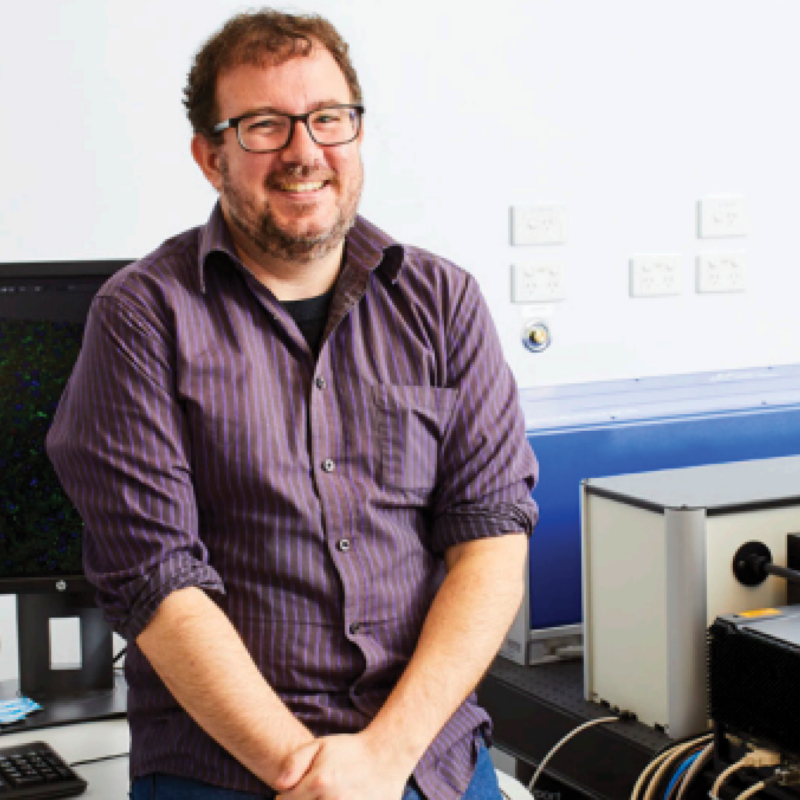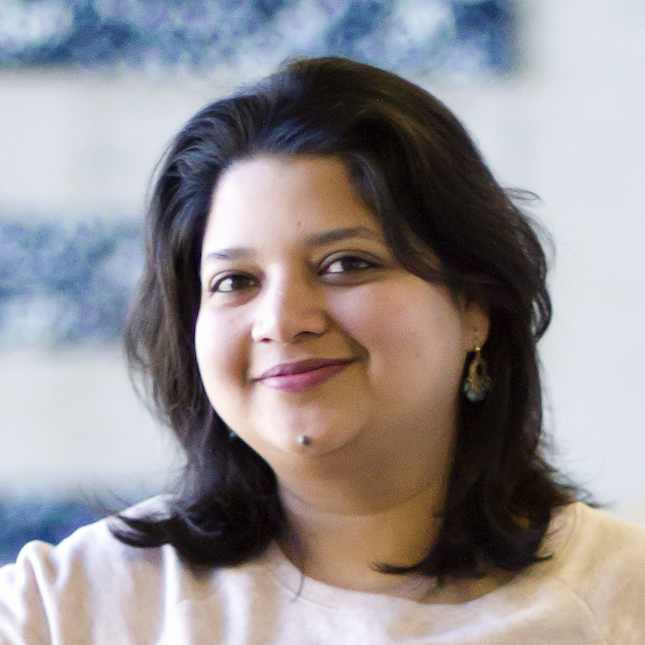 Akanksha Jain
Akanksha Jain
I studied Botany (honors) at the Delhi University. After that I moved to the Department of Biological Sciences, TIFR, Mumbai where I studied the Role of Kinesin-2 in odor receptor transport and olfactory maturation of cilia in Drosophila in a three-year Masters by Research program. I did my PhD in the lab of Dr Pavel Tomancak at the MPI-CBG where I worked on tissue morphogenesis and mechanics in the beetle Tribolium castaneum. My current research is focusing on the development and patterning mechanism in human cerebral organoids under the guidance of Prof. Barbara Treutlein at the D-BSSE, ETH-Zurich in Basel, Switzerland.
Cameron Nowell
Cameron has led the imaging and flow cytometry capabilities at MIPS since its inception 10 years ago. Bringing experience in imaging (optical and electron) along with a range of other lab skills such as molecular biology, biochemistry and microbiology helped the facility provide a holistic approach to imaging. Not just offering tools for imaging, but project support form initial design to final data analysis. The approach of the facility is that an image is the first step, the data that can be mined out of it using advanced analysis is where the true value lies.
This has helped Cameron be part of many and varied projects ranging from pharmacology to SARS-CoV-2, honey bees and even coral growth. He has been an author on over 100 papers with >3100 citations in many high impact journals including Cell, Cancer Discovery, Nature Nano., Immunity and Nature Immunity.
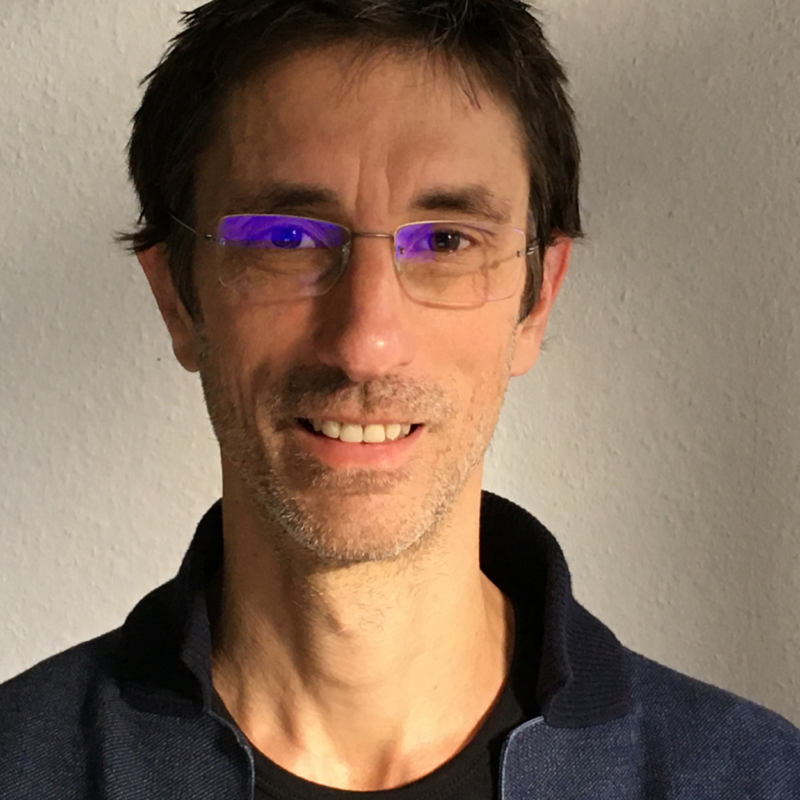 Christian Tischer
Christian Tischer
Christian Tischer studied physics in Heidelberg, Germany. He learned about biology and microscopy during his PhD thesis at the European Molecular Biology Laboratory (EMBL) in Heidelberg where he developed specialized microscope systems to investigate cellular signaling mechanisms. He deepened his knowledge in bioimaging during a postdoctoral research project at the AMOLF institute in Amsterdam where he worked on the microscopy based quantification of cyto-skeleton dynamics. Following a passion for support and teaching he then worked of almost 10 years at EMBL’s Advanced Light Microscopy Facility (ALMF) supporting scientists in both microscopy and bioimage analysis. Since end of 2018, his focus shifted completely towards bioimage analysis support and he is now running EMBL’s Centre for Bioimage Analysis (CBA).
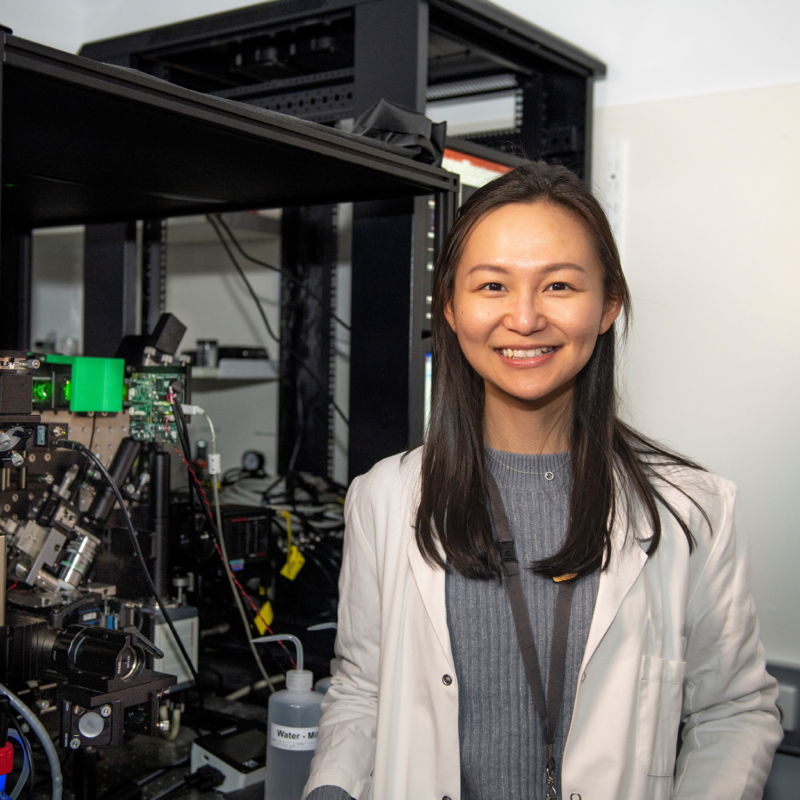 Cindy Evelyn
Cindy Evelyn
Ms Cindy Evelyn joined the Centre for Dynamic Imaging at the Walter and Eliza Hall Institute (WEHI) in 2018 to assist researchers in performing experiments involving widefield and confocal microscopy. After undergraduate studies in Physics at the University of Melbourne, Ms Evelyn undertook her Honours year at the WEHI. Through her work on blood stage malaria invasion with Associate Professor Kelly Rogers, Professor Alan Cowman and Dr Lachlan Whitehead, Ms Evelyn gained expertise in live cell fluorescent microscopy. She now collaborates with researchers at the Institute to work on blood stage malaria invasion using state-of-the-art microscopy techniques, including lattice light sheet microscopy.
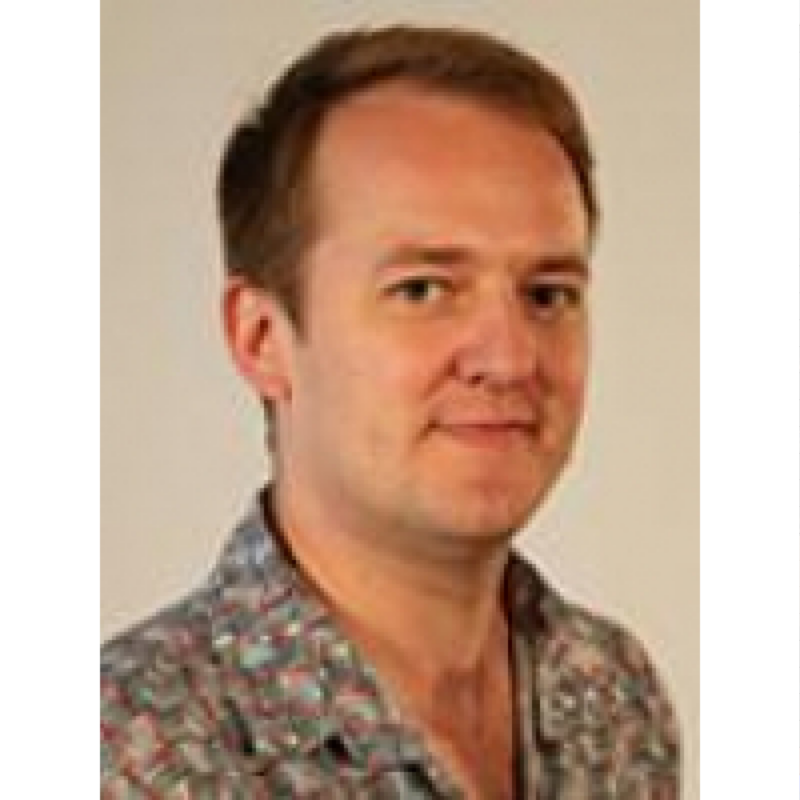 Elvis Pandzic
Elvis Pandzic
My expertise is defined by analysis of images acquired by various different microscopy modalities. Over the course of my studies and afterwards, I mastered a suite of advanced image analysis techniques, commonly known as Image Correlation Spectroscopy, which are useful to quantify the microscopy data of sub-cellular structures and proteins. These techniques use the correlation of the pixels’ fluctuations in space and time in order to quantify the number density, co-localization and dynamics of molecules and molecular complexes, from image time series of live cells. Also, during two years of post-doctoral work, I acquired experience in both imaging and data interpretation in single-molecule approaches such as dSTORM, PALM, sptPALM. More broadly, I apply my experience of ~15 years of programming knowledge in Matlab and cellular and molecular biophysics, in order to help BMIF users and broader national and international scientific community to solve various problems and define tailored image analysis approaches to the problem at hand.
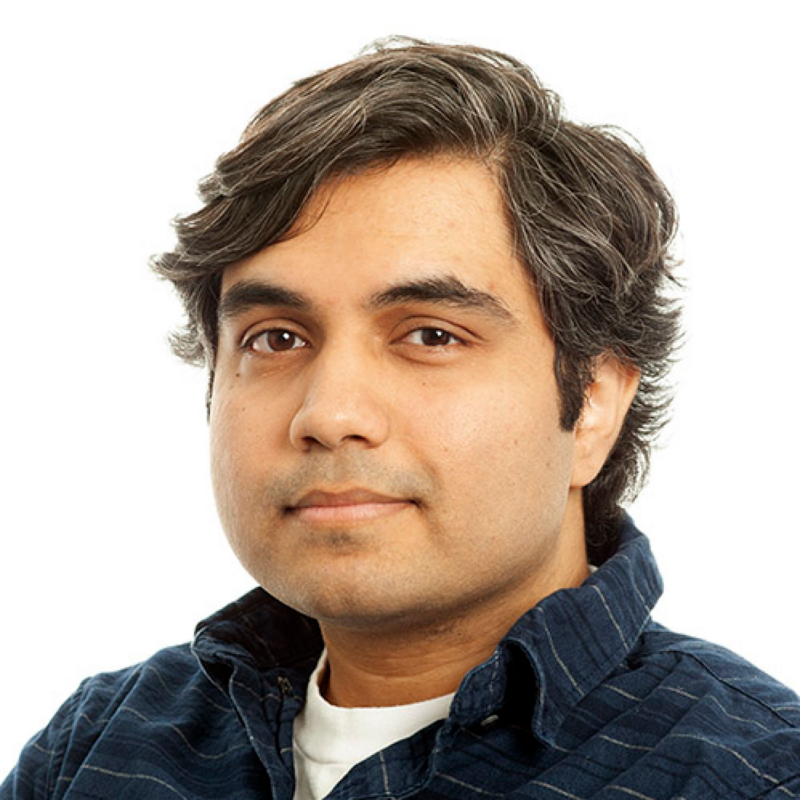 Gokul Upadhyayula
Gokul Upadhyayula
Srigokul (Gokul) Upadhyayula is an Assistant Professor and serves as the Scientific Director for the Advanced BioImaging Center (ABC) at UC Berkeley. ABC is a global initiative to bring together biologists and data scientists with free access to advanced imaging systems. He earned advanced degrees in both the life sciences and engineering, which, combined, place him in a unique position to facilitate research across multiple fields, both in independent and highly integrated contexts. Gokul’s technical and pedagogical skillsets are honed by extensive experience working with advanced microscopy hardware and image analysis software in collaborative and instructional situations. Gokul implemented custom image analysis algorithms to quantitatively extract information meaningful to biological study and developed tools to help visualize complex 5D datasets (see publications). Furthermore, he has practical experience working on terabyte and petabyte scale projects and became well versed in the challenges and limitations concerning to the analysis and visualization using scalable high-performance computing architectures.
 Josh Moore
Josh Moore
Josh Moore is a research software engineer focused on data management for bioimaging. A maintainer of the Open Microscopy Environment (OME) as well as the Zarr projects, over the last 20 years Josh has designed the OMERO server, lead the development of the Image Data Resource (IDR) and launched a community-specified next-generation file format, OME-Zarr. Starting this year, he will begin work on the NFDI4BIOIMAGE project to establish FAIR bioimaging within the National Research Data Initiative in Germany.
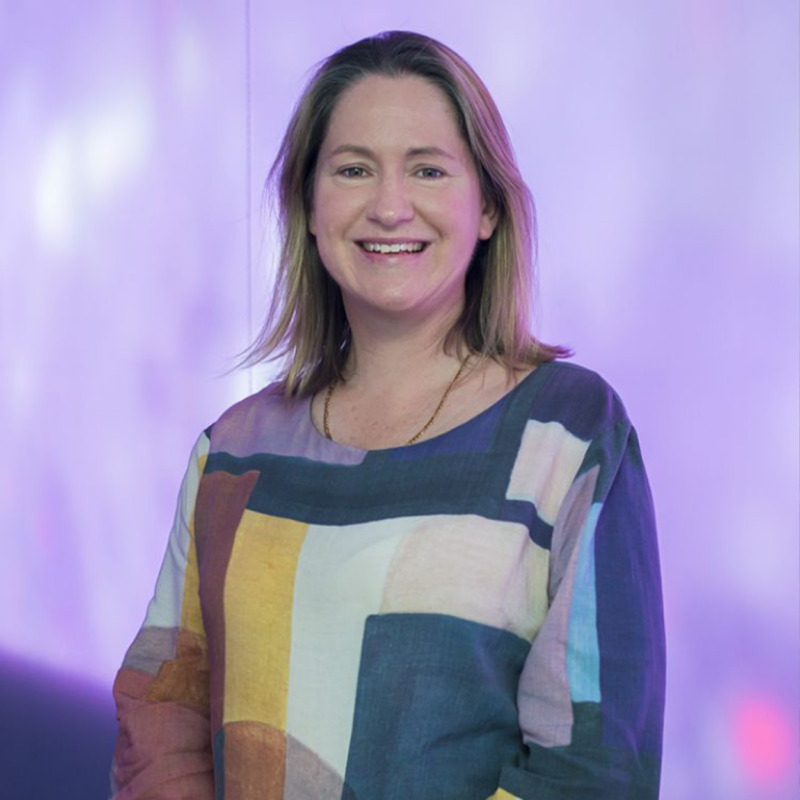 Kelly Rogers
Kelly Rogers
Associate Professor Kelly Rogers is Head of the Advanced Technology and Biology Division and the Centre for Dynamic Imaging at the Walter and Eliza Hall Institute (WEHI) in Melbourne, Australia. After completing a PhD at Griffith University, she undertook postdoctoral training at the Institut Pasteur in Paris before returning to Australia in 2009 to establish the Centre for Dynamic Imaging (CDI) at WEHI. In 2017 A/Prof. Rogers was appointed a laboratory head with a focus on the application and development of advanced microscopy methods. One of the achievements of her team has been to build a lattice light sheet microscope which was instrumental in the discovery that mitochondrial DNA is released during apoptosis through BAK and BAX pores in the outer mitochondrial membrane. Her team has also used this approach to obtain 4D volumetric data on malaria parasite infection of red blood cells to gain greater insight about the role of parasite derived proteins and force on host cell membrane and cytoskeletal reorganisation during invasion.
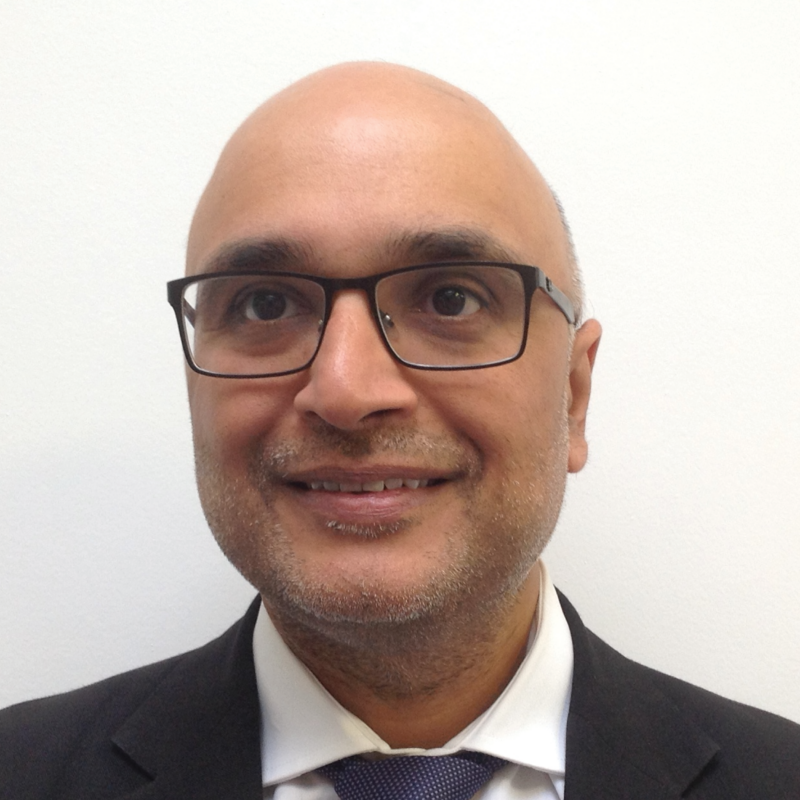 Kishan Dholakia
Kishan Dholakia
Kishan Dholakia is Professor at the University of Adelaide, Australia and the University St Andrews, Scotland. He works on advanced optical beam shaping for imaging, precision measurement and optical manipulation. He has over 350 refereed journal papers and in excess of 38,000 citations (Google Scholar). He is recipient of the R.W. Wood Prize of the Optica (2016), the IOP Thomas Young Medal and Prize (2017) and the SPIE Dennis Gabor Award (2018). He is an inventor of Airy Light Sheet Microscopy which has been commercialised and is used in over ten countries around the World. He is the 2021 recipient of an ARC Laureate Fellowship and the Director of the newly launched (Feb 2023) Centre of Light for Life at Adelaide
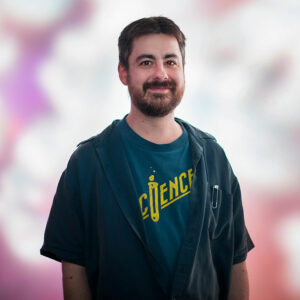 Lachlan Whitehead
Lachlan Whitehead
Dr Lachlan Whitehead joined the Centre for Dynamic Imaging at WEHI over a decade ago as an optical physicist providing microscope and software support for researchers across ths institute. After completing his undergraduate studies he completed his PhD in the field of X-ray optics at the University of Melbourne developing a computational imaging technique using synchrotron radiation. After a brief stint in the corporate world he wound up in front of the microscopes in the CDI. Since then he’s moved from the eyepieces to the computer screen, driving the field of bioimage analysis within WEHI. His career highlights include travelling to the HHMI Janelia Campus to evaluate the Lattice Light Sheet Microscope in its infancy and being instrumental in bringing the technology to WEHI, and presenting at the Amazon Web Services annual summit on the use of cloud compute to accelerate processing of LLSM data. He has recently founded the Bioimage Analysis Core within the CDI, and spends his days fighting back the tidal wave of data that modern microscopes produce.
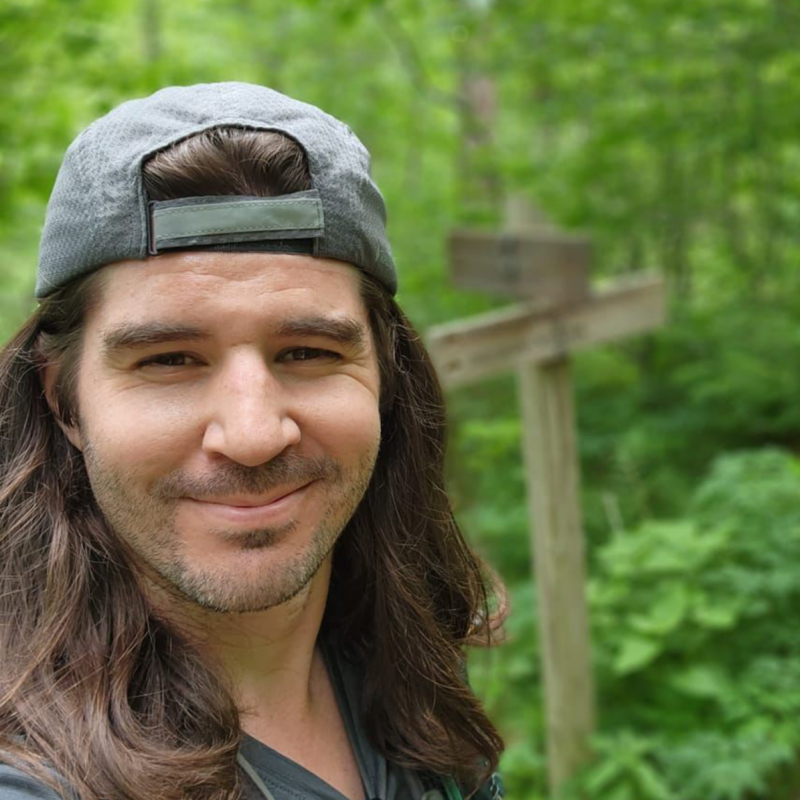 Michael Morehead
Michael Morehead
Michael Morehead is a medical school dropout, a non-Hodgkin Lymphoma survivor, a computer scientist, and an entrepreneur. He completed his master’s degree in computer science at West Virginia University in 2015, and while working toward a PhD, co-invented the syGlass application for direct volume rendering in virtual reality. For the past 8 years, Michael has served as the CEO of the company, leading efforts in product development, marketing, sales, partnerships, and business development. syGlass is now used in more than 200 research institutions around the world, and has been applied in basic science, geology, medical science, industrial manufacturing, and is experiencing rapid growth in STEM education. Michael currently lives in Olympia, Washington, where he enjoys climbing mountains and cross-country skiing.
 Vijay Rjagopal
Vijay Rjagopal
Dr. Vijay Rajagopal is an Associate Professor of the Dept. of Biomedical Engineering and heads the Cell Systems and Mechanobiology Lab at the University of Melbourne. Dr. Rajagopal received his PhD in Bioengineering at the University of Auckland, Auckland Bioengineering Institute. He received additional postdoc training at MIT in microfluidics and mechanobiology. At the University of Melbourne, the Cell Systems and Mechanobiology Lab develop biophysics-based computational models of cell and organ physiology for biomedical discovery and clinical applications.
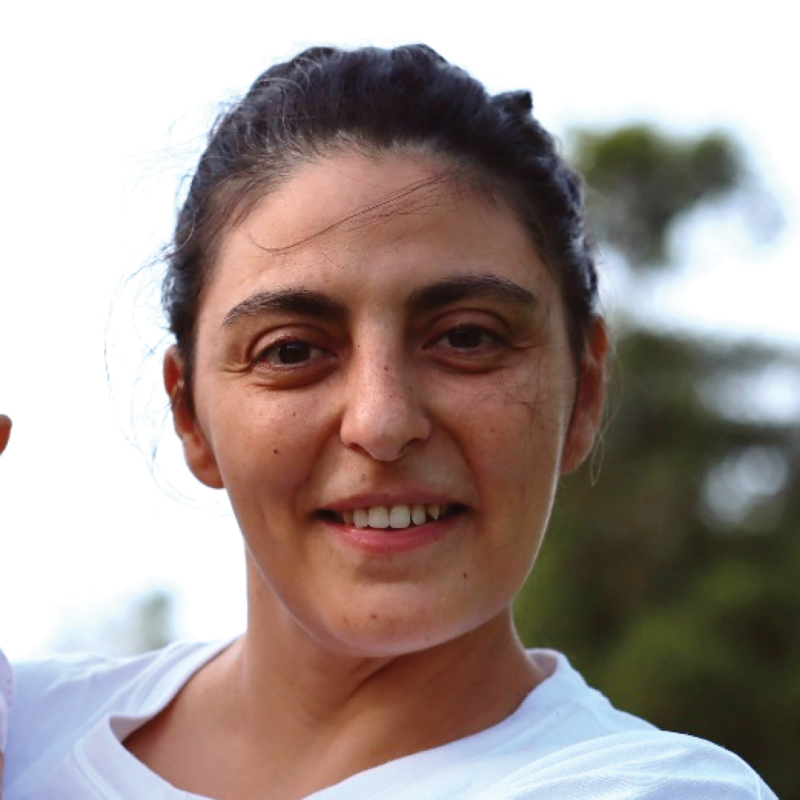 Yanina Alvarez
Yanina Alvarez
From early in my career, I have been interested in applying physical approaches to understand the interplay between genetic determinants, cellular properties, and mechanical forces during tissue formation. I have established an interdisciplinary background with a Master’s in physics, a PhD in biology and postdoctoral research in biochemistry and developmental biology. Over the last seven years, I have been applying advanced imaging technologies to understand mechanisms of cell fate determination in embryonic stem cells and early embryo development. Currently, I am a senior postdoctoral fellow working alongside Dr. Melanie White at the IMB -University of Queensland, applying advanced imaging technologies to study the dynamics of neural tube formation in the novel transgenic quail model.
